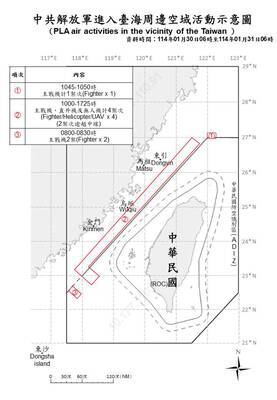Gender inequality has remained stagnant for a decade, according to research by the UN released yesterday, as cultural biases and pressures continue to hinder women’s empowerment and leave the world unlikely to meet the UN’s goal of gender parity by 2030.
Despite a surge in women’s rights groups and social movements like Time’s Up and #MeToo in the US, biased social norms and a broader human development crisis heightened by COVID-19, when many women lost their income, have stalled progress on inequality.
In its latest report, the UN Development Programme (UNDP) tracked the issue through its Gender Social Norms Index, which uses data from the international research program World Values Survey.

Photo: Reuters
The survey draws from data sets spanning 2010 to 2014 and 2017 to last year from countries and territories covering 85 percent of the global population.
The latest analysis showed that almost nine out of 10 men and women hold fundamental biases against women, and that the share of people with at least one bias has barely changed over the decade. In 38 of the surveyed countries the share of people with at least one bias decreased to just 84.6 percent from 86.9 percent.
“The degree of improvement over time has been disappointing,” said Heriberto Tapia, research and strategic partnership adviser at UNDP and coauthor of the report.
The survey showed that nearly half of the world’s people think that men make better political leaders, while 43 percent think men are better business executives.
“We need to change the gender biases, the social norms, but the ultimate goal is to change the power relations between women and men, between people,” said Aroa Santiago, gender specialist in inclusive economies at UNDP, told Reuters.
Although education has always been hailed as key for improving economic outcomes for women, the survey revealed the broken link between the education gap and income, with the average income gap at 39 percent even in the 57 countries where adult women are more educated than men.
More direct harm to women’s well-being could be seen in views on violence, with more than one out of every four people believing it was justified for a man to beat his wife, the UNDP said.

UNITED: The premier said Trump’s tariff comments provided a great opportunity for the private and public sectors to come together to maintain the nation’s chip advantage The government is considering ways to assist the nation’s semiconductor industry or hosting collaborative projects with the private sector after US President Donald Trump threatened to impose a 100 percent tariff on chips exported to the US, Premier Cho Jung-tai (卓榮泰) said yesterday. Trump on Monday told Republican members of the US Congress about plans to impose sweeping tariffs on semiconductors, steel, aluminum, copper and pharmaceuticals “in the very near future.” “It’s time for the United States to return to the system that made us richer and more powerful than ever before,” Trump said at the Republican Issues Conference in Miami, Florida. “They

GOLDEN OPPORTUNITY: Taiwan must capitalize on the shock waves DeepSeek has sent through US markets to show it is a tech partner of Washington, a researcher said China’s reported breakthrough in artificial intelligence (AI) would prompt the US to seek a stronger alliance with Taiwan and Japan to secure its technological superiority, a Taiwanese researcher said yesterday. The launch of low-cost AI model DeepSeek (深度求索) on Monday sent US tech stocks tumbling, with chipmaker Nvidia Corp losing 16 percent of its value and the NASDAQ falling 612.46 points, or 3.07 percent, to close at 19,341.84 points. On the same day, the Philadelphia Stock Exchange Semiconductor Sector index dropped 488.7 points, or 9.15 percent, to close at 4,853.24 points. The launch of the Chinese chatbot proves that a competitor can

TAIWAN DEFENSE: The initiative would involve integrating various systems in a fast-paced manner through the use of common software to obstruct a Chinese invasion The first tranche of the US Navy’s “Replicator” initiative aimed at obstructing a Chinese invasion of Taiwan would be ready by August, a US Naval Institute (USNI) News report on Tuesday said. The initiative is part of a larger defense strategy for Taiwan, and would involve launching thousands of uncrewed submarines, surface vessels and aerial vehicles around Taiwan to buy the nation and its partners time to assemble a response. The plan was first made public by the Washington Post in June last year, when it cited comments by US Indo-Pacific Commander Admiral Samuel Paparo on the sidelines of the Shangri-La Dialogue

MARITIME SECURITY: Of the 52 vessels, 15 were rated a ‘threat’ for various reasons, including the amount of time they spent loitering near subsea cables, the CGA said Taiwan has identified 52 “suspicious” Chinese-owned ships flying flags of convenience that require close monitoring if detected near the nation, the Coast Guard Administration (CGA) said yesterday, as the nation seeks to protect its subsea telecoms cables. The stricter regime comes after a Cameroon-flagged vessel was briefly detained by the CGA earlier this month on suspicion of damaging an international cable northeast of Taiwan. The vessel is owned by a Hong Kong-registered company with a Chinese address given for its only listed director, the CGA said previously. Taiwan fears China could sever its communication links as part of an attempt